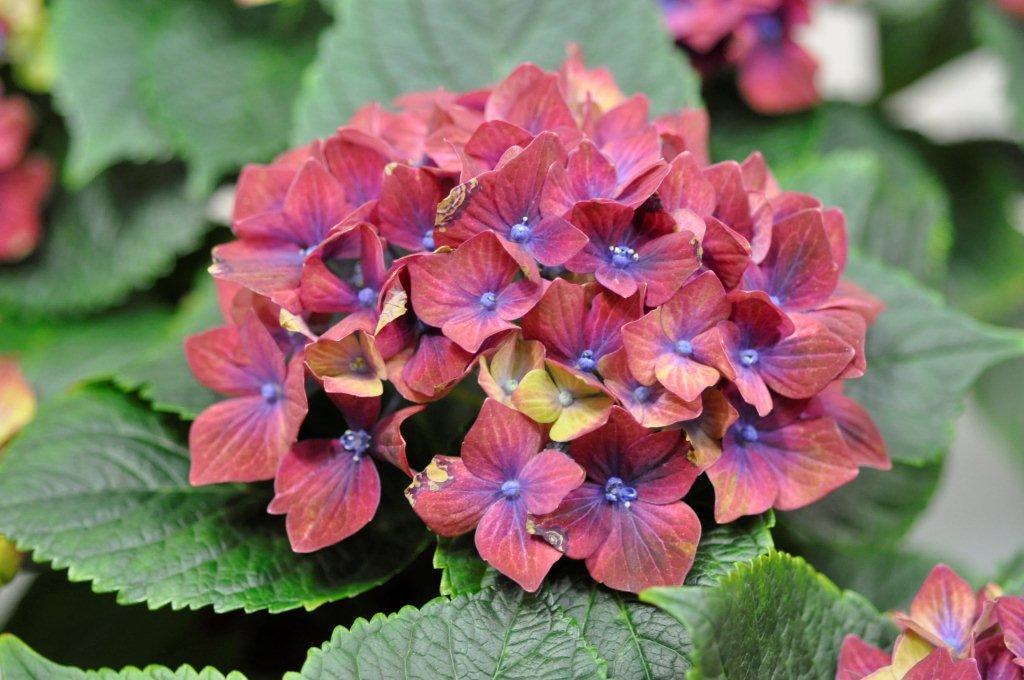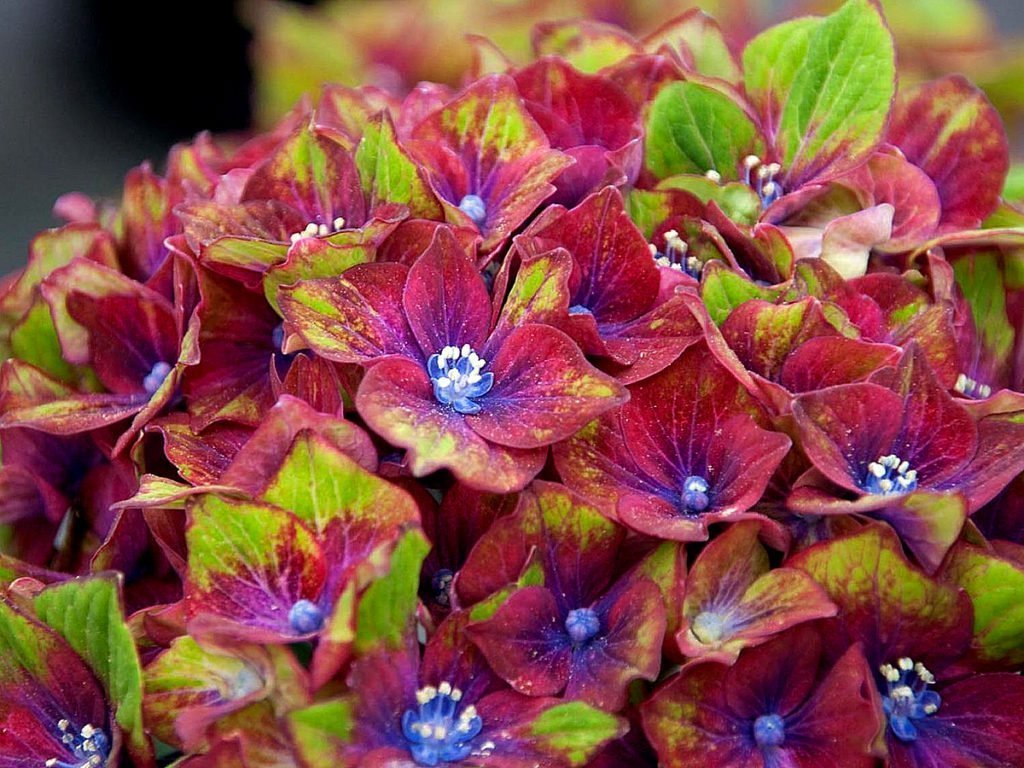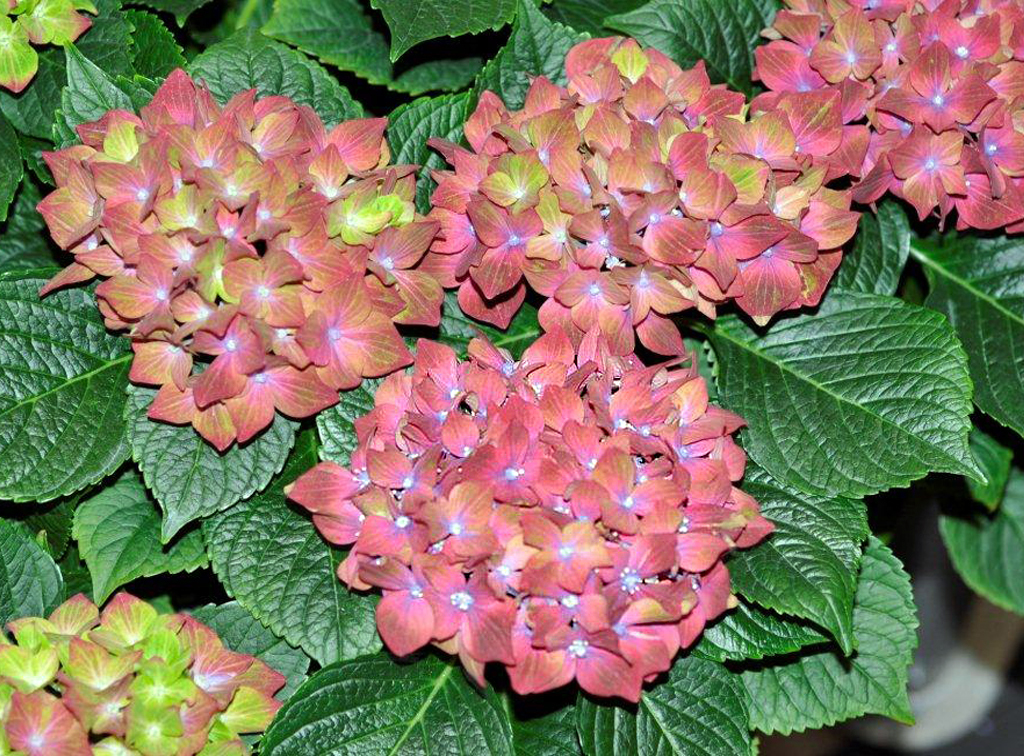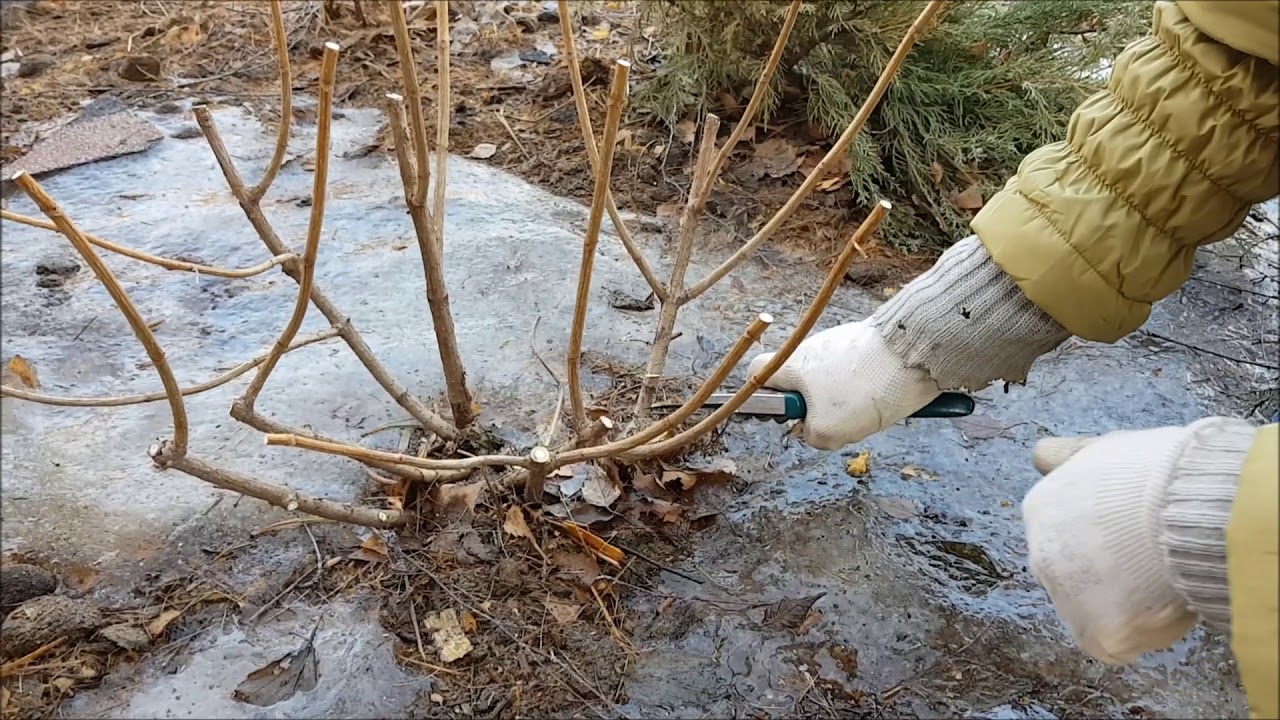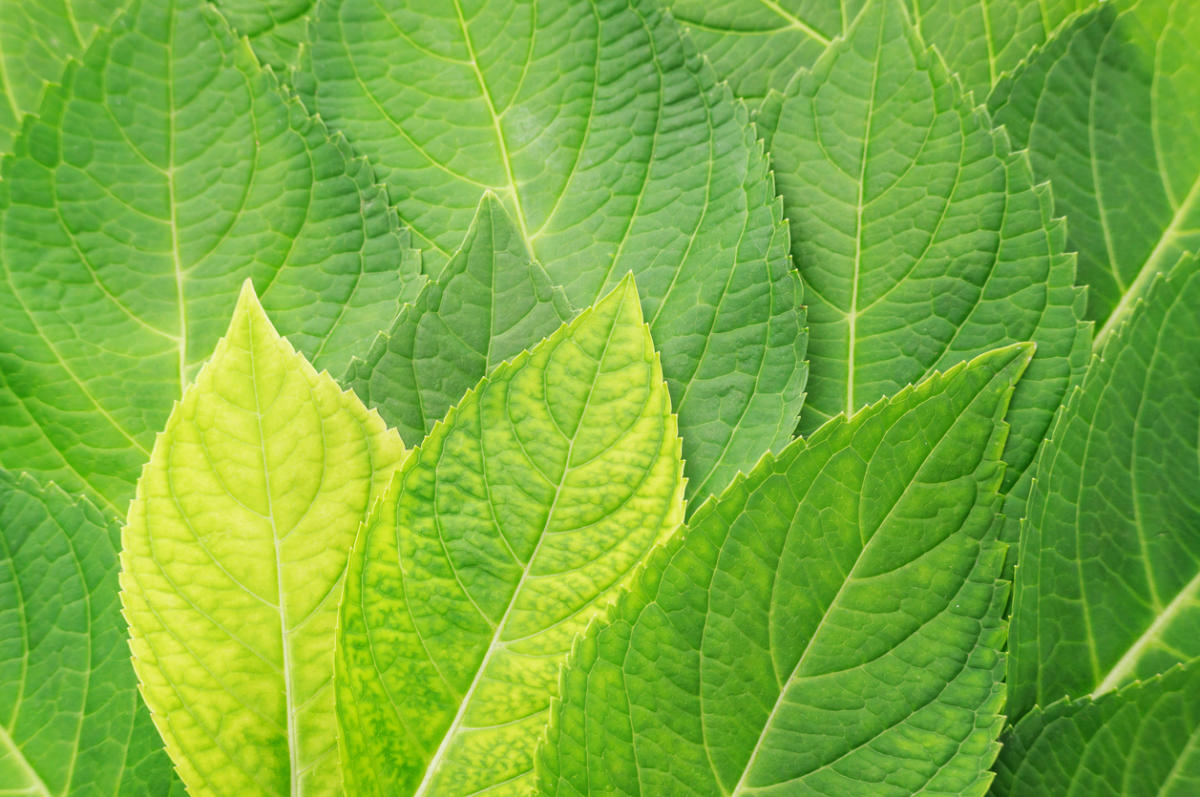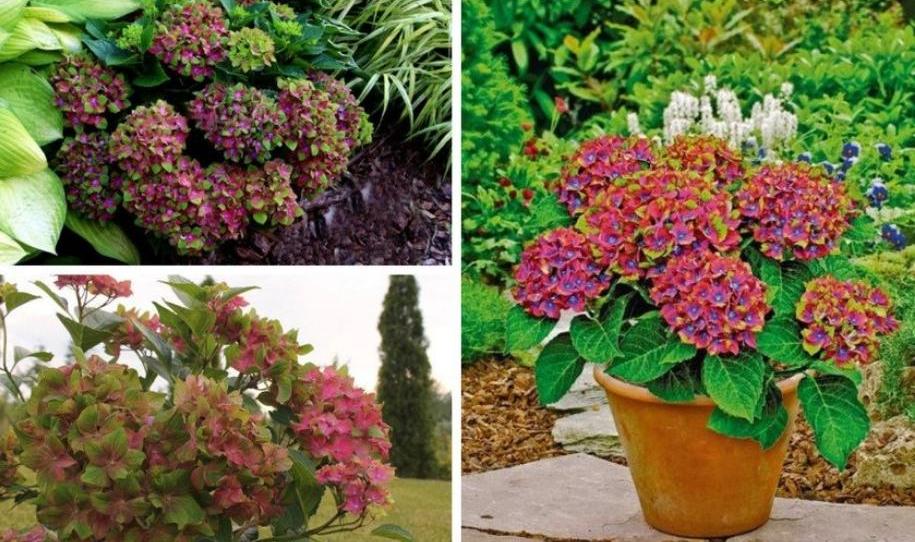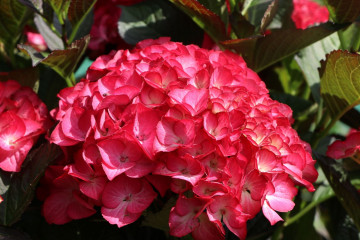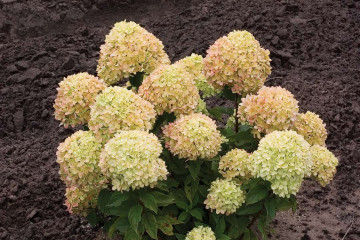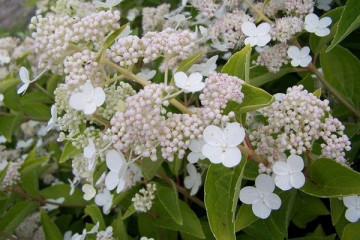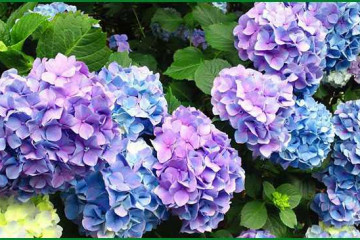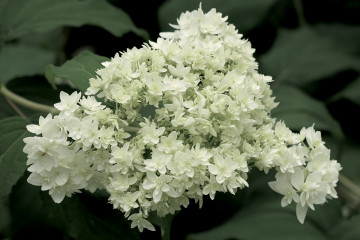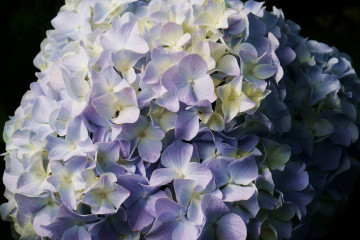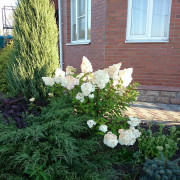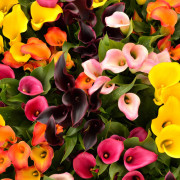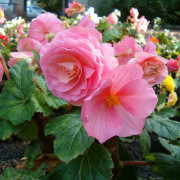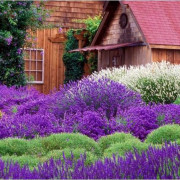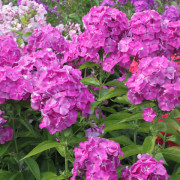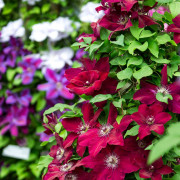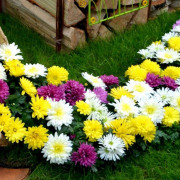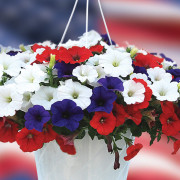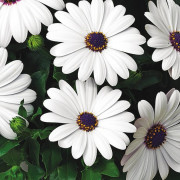Hydrangea Schloss Wackerbart - description, planting and care
Content: [Hide]
One of the most popular plants grown at their summer cottage is hydrangea. This shrub has many advantages - it is easy to care for, the plant grows quickly and blooms profusely after planting.
Description of the Schloss Wackerbart hydrangea variety and its characteristics
Before purchasing a hydrangea bush sapling (lat.Hydrangea), it is imperative to study the characteristics and description so as not to regret choosing a variety in the future.
History of origin
The Schloss Wacketbart variety was bred quite recently - in 2014.
Features of the variety
The shrub grows up to 1.3 m in height. The crown reaches 1.2 m in diameter. The foliage is large, light green in color. This variety has an unusual flowering. Inflorescences are collected from a large number of small flowers, spherical shape. The tips of the petals are lime colored. The middle of the petal is crimson and the center is purple. The higher the acidity of the soil, the richer the inflorescences are.
Winter hardiness
The shrub is frost-resistant. It can withstand temperatures as low as -18 degrees.
Planting and further care
Planting and caring for the Schloss Wackerbart large-leaved hydrangea is not difficult.
Site selection and preparation
Hydrangea Schloss Wackerbarth prefers to grow in open areas under the sun. It is desirable that the place be closed from cold drafts. The soil on the site must be well-drained and breathable.
Before planting, the soil is dug up and all growing weeds are pulled out of it. Then either complex mineral fertilizers or organic matter (for example, wood ash, compost or rotted cow dung) are applied.
How to plant
First, the seedlings of the plant should be soaked for several hours in a root system stimulator.
Description of planting hydrangea Schloss Wackerbarth:
- Dig a hole up to 1 m deep and about 80-90 cm wide.
- Pour a layer of crushed brick to the bottom.
- Place the seedling in the hole and bury it.
- Pour plenty of heated water over the hole.
Watering and feeding
Hydrangea Wackerbath Castle prefers moderate watering. Irrigation begins in early spring after the snow melts and the soil warms up. As a rule, the shrub is watered every day until autumn, especially if the heat is long in summer. Watering is carried out as the soil dries up.
In the first half of the season, the plant is fed with nitrogen-containing fertilizers. During the formation of buds, phosphorus and potassium must be added to the soil. Organics have a beneficial effect on growth.
Pruning
Every year, you need to prune thin, weak branches of hydrangea growing in the depths of the crown. Also, be sure to remove dried branches. To make the crown look better, branches that are very elongated can be pruned. After that, the side shoots will begin to grow, and the flower will look more bushy.
Preparing for winter
Hortense Wackerbart Castle may well hibernate without shelter.But just in case, it's best to take care of this. Procedure:
- Dig up the soil around the bush to a depth of 10 cm.
- Cover the soil surface with mulch.
- Wrap the shrub itself with agrofibre.
Reproduction
Of all the breeding methods for large-leaved hydrangea, the most common are planting by cuttings and dividing the bush.
The easiest way to propagate the plant is by dividing the rhizome. This requires mature, well-grown, bushes. The shrub is dug up and the rhizome is divided into parts. After that, you can start planting.
The second method is grafting. Step-by-step instruction:
- Choose strong shoots, cut cuttings 15-20 cm long from them. Each cuttings should have several large buds.
- Cut off the bottom of the cutting at a 45-degree angle.
- Put the workpieces in a growth stimulator (Kornevin) for 1-2 hours.
- Prepare the substrate. You can use a commercial soil mixture or make it yourself from peat, sand and leafy soil.
- Place the cuttings in the soil, water liberally and cover with a glass jar.
Roots will begin to form in a few weeks. It is better to plant cuttings in open ground in a year, when they grow up and get stronger.
Diseases and pests, ways to deal with them
The most common hydrangea diseases include:
- chlorosis (leaves turn yellow);
- gray rot (gray bloom appears on the leaf plate);
- powdery mildew;
- rust;
- cancer.
With chlorosis, you need to soften the water for irrigation by adding citric acid or vinegar to it. You also need to limit the introduction of mineral dressings.
With gray rot, you first need to cut off the damaged areas, then process the flower with potassium permanganate. Treatment with Bordeaux liquid helps. Spraying with Fitosporin B and Topaz helps with powdery mildew. Previously damaged areas of foliage are cut off.
Rust can be treated with Topaz and Falcon fungicides.
Pests on the shrub include aphids, spider mites, rootworm nematodes and slugs. The slugs will have to be removed manually. Most often they appear on young bushes. Spraying with fungicides helps from other pests. For example, the drugs Molniya, Akarin, Iskra and Zubr are effective. Watering the foliage with soapy water can help with aphids if the pest population is still small.
Use in landscape design
All varieties of hydrangea go well in group plantings with any other crops. The plant can also be planted as a hedge.
Growing hydrangeas in the garden is a pleasure. It is impossible to take your eyes off the beauty of the flowering shrub. In addition, he is also not capricious in leaving.
